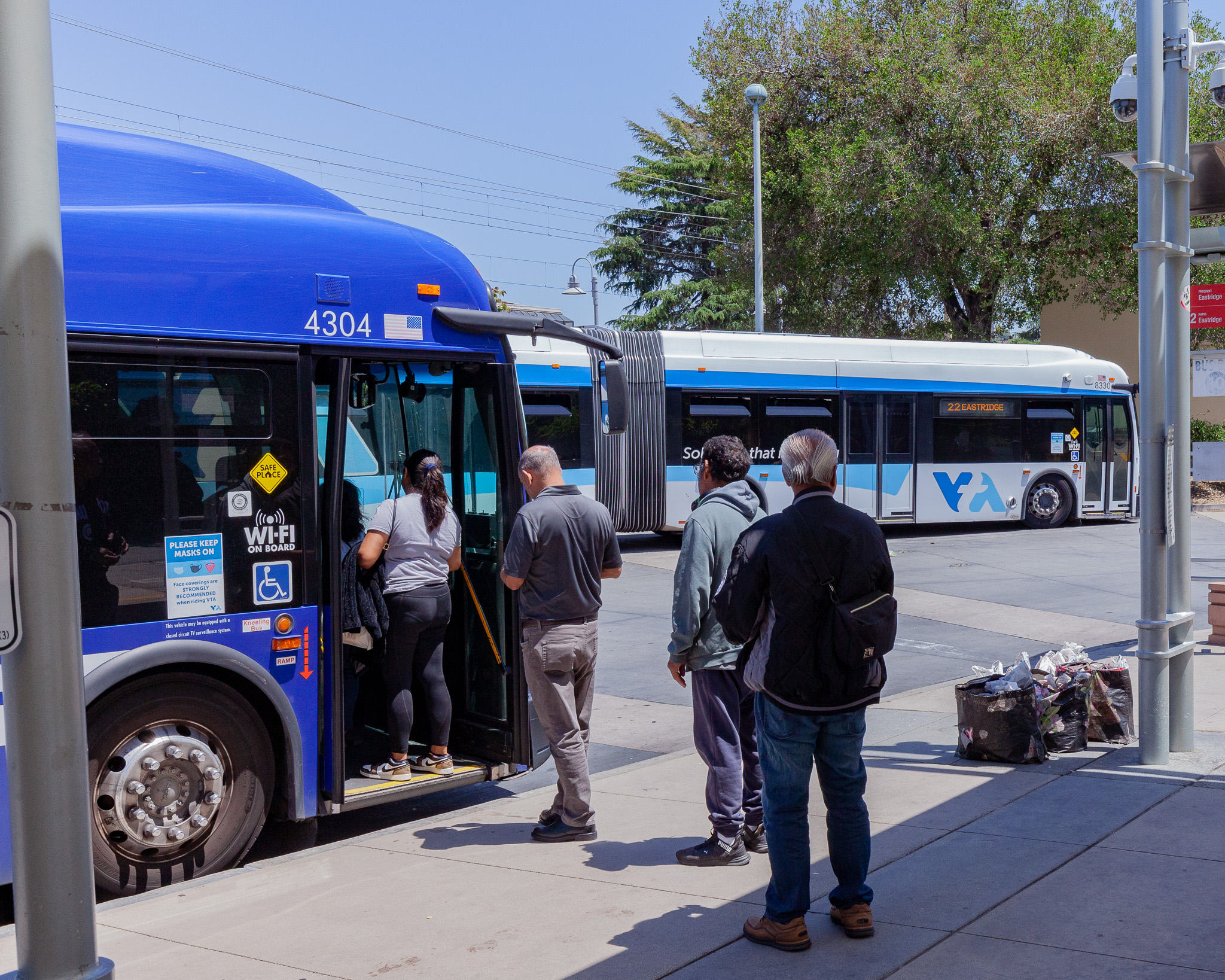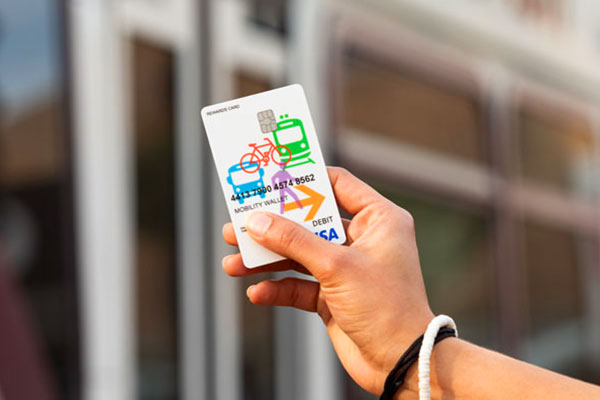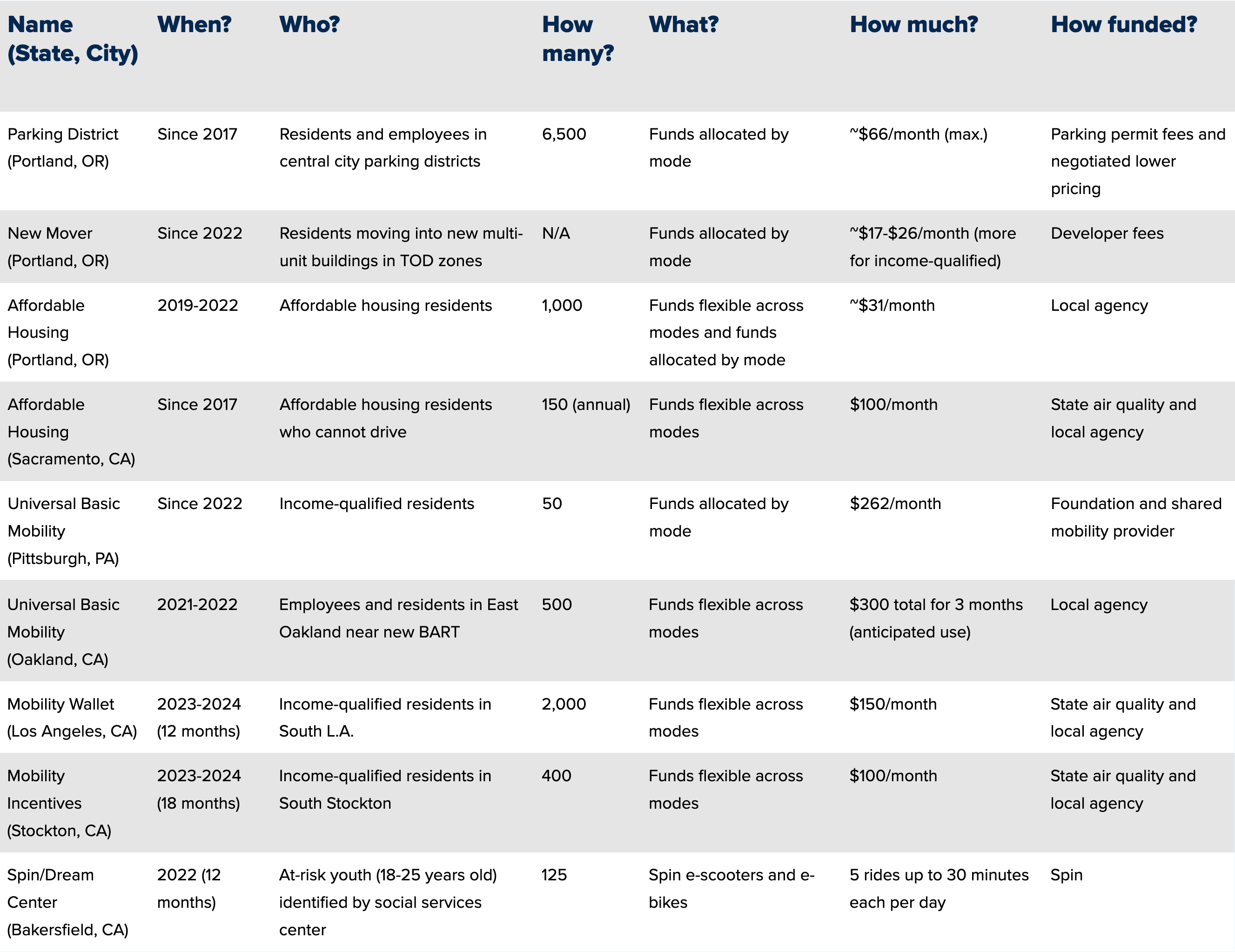Who are you?
What industry do you work in?
Mobility Wallet programs are improving how people access transportation, offering riders free or reduced-cost options across transit, micromobility, and rideshare. Learn how LA Metro, the City of Philadelphia, and others are offering innovative programs to promote equitable transit.

Transit payments have come a long way from nickel-powered turnstiles. Today, agencies are embracing fare payment innovations that support more equitable transit solutions, and Mobility Wallet programs have emerged as a new frontier. What exactly is a Mobility Wallet, and what do riders and their advocates need to know about them?
Simply put, a Mobility Wallet is a universal transit pass. It could look like a special physical smart card, or a virtual token in a mobile wallet.
When transit agencies or other public-facing organizations run a mobility wallet program, typically for people eligible for other public benefits, they allow recipients to ride public and often private transportation for free or at a reduced cost. Mobility Wallets are often the payment mechanism of a Universal Basic Mobility program.
LA Metro, for example, currently holds the title for the biggest Mobility Wallet program in the United States, giving $150 a month to each of 1000 residents of South LA. LA Metro’s mobility wallet funds can be used to ride transit, rent a shared scooter, take microtransit, hail an Uber or Lyft, or even purchase an e-bike – just not for owning or operating a car.

Researchers at UC Davis studied two recent Mobility Wallet programs in urban Oakland and rural Bakersfield, and found that participants used their new and improved mobility access to:
These findings are consistent with what LA Metro observed in the first phase of their program. Yes, most of the funds pay for expensive Uber and Lyft rides (84%), but the majority of the trips are on transit (59%):

Many cities have run Mobility Wallet programs in the past few years, including Portland, Sacramento, Pittsburgh, Oakland, Los Angeles, Stockton, and Bakersfield. How passes can be used and how they're funded varies from city to city, but all show a promising trend towards transit equity.

For more on these Mobility Wallet pilots and the impacts of Universal Basic Mobility, check out the UC Davis Institute of Transportation Studies.
Jawnt’s mission is to make it easier for people to use transportation, and we’re proud to include Mobility Wallet programs among the groups we support. Later this year and next, select residents of East San Jose will use their Jawnt Passes to access Mobility Wallets through a partnership with the Amigos de Guadalupe Center for Justice and Empowerment.
We’re also proud to support the City of Philadelphia’s Zero Fare Program, through which over 44,000 eligible Philadelphia residents receive unlimited SEPTA passes. We’ve supported this program since its launch in 2023, and in 2025 were co-finalists with the City of Philadelphia for Transport Ticket Global’s Best Equity and Inclusion Initiative.
The first decisions in setting up a Mobility Wallet program are determining who will be eligible, and where the funding will come from. The table above highlights choices from several programs around the US.
Most Mobility Wallet programs look similar behind the scenes. A local organization (either the city, the transit agency, or a nonprofit) retains a vendor to manage the program. The organization determines who is eligible to participate, and the vendor ensures these eligible participants receive their cards, funds, and technical support. Many organizations put this call for vendors out as a Request for Proposals (RFP).
Once the program is scoped and funded, carefully planned communication can enhance positive outcomes.
Read more in our guide to the Essential Elements to Include in a Universal Basic Mobility Program RFP.
Have more questions? Get in touch.